
Japingka Aboriginal Art Gallery
a traditional & contemporary approach to marketing
I have long admired the aesthetic qualities of Australian Aboriginal Artworks. So much so that it is hard for me to walk past a gallery. In the interest of full disclosure – I am not pretending to know anything about Australian Aboriginal Art or any art for that matter, however, like many people i just like what I like.
One Saturday afternoon, I was wandering down High Street in the West-End of Fremantle [actually I was hoping to take some photographs], and was drawn into Japingka Gallery. I have been there a few times, the gallery has been in Fremantle for around 30 years and they have a large collection and are constantly updating their window display. I believe, that Japingka Gallery is one of the biggest in Australia. As I wandered around, one artwork in particular, ‘Seven Sisters Dreaming’, caught my eye and I became enthralled as Jody Fitzhardinge from the gallery told me the narrative of artwork; as she did, the artwork, as beautiful as it is, took on a broader, deeper, and more beautiful meaning. The story, she said, provides a glimpse into the sacred culture of this remote tribe of people, it depicts the story of the seven ancestral Napaljarri sisters who to prevent capture turn themselves into fire and ascend to the heavens, they are represented by a group of seven stars that are visible in our night sky [see below].
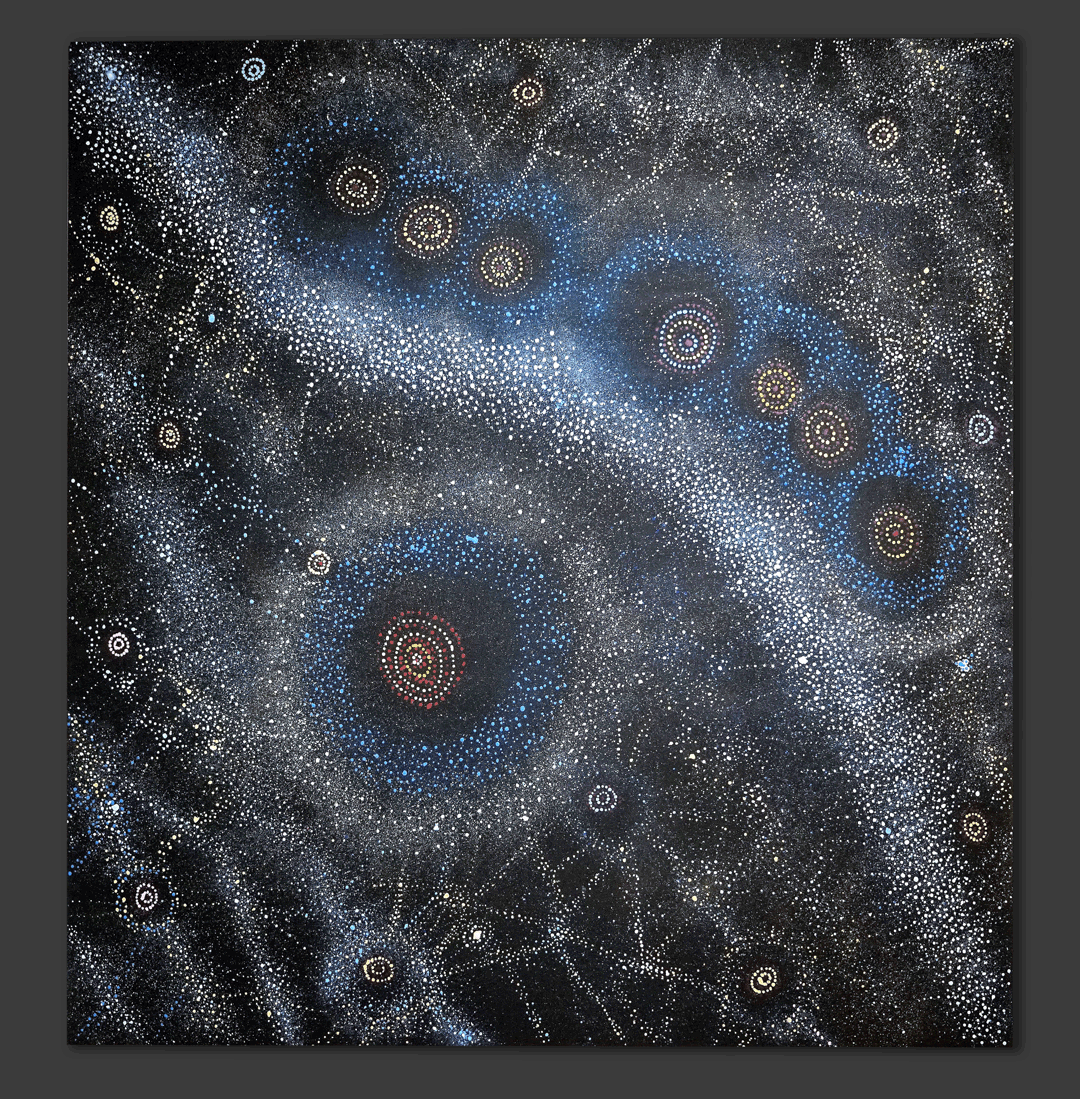
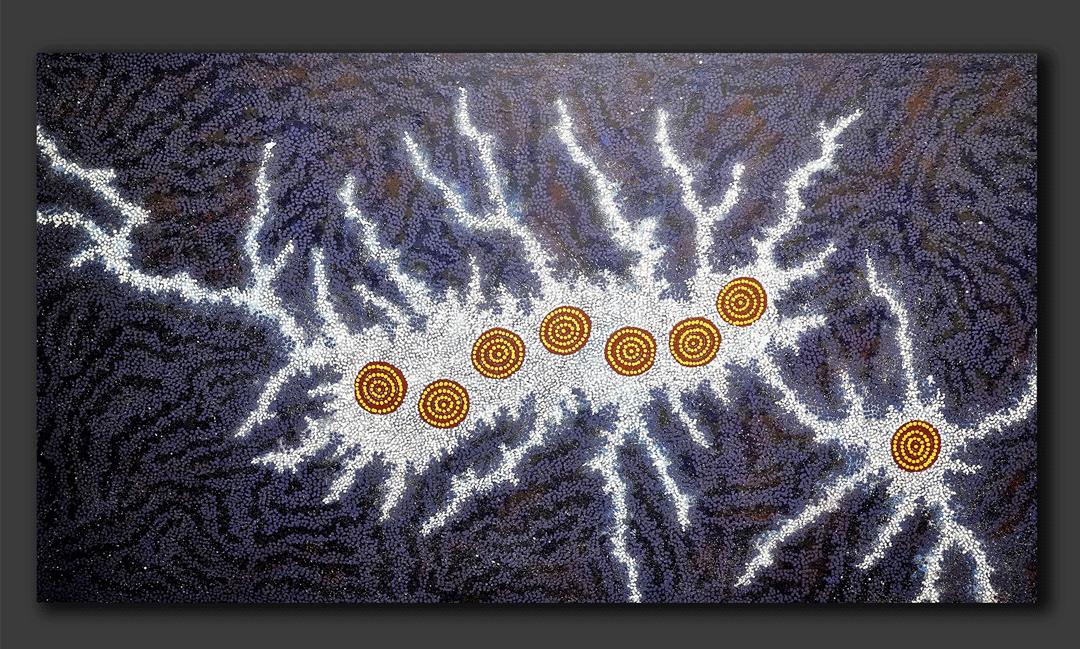
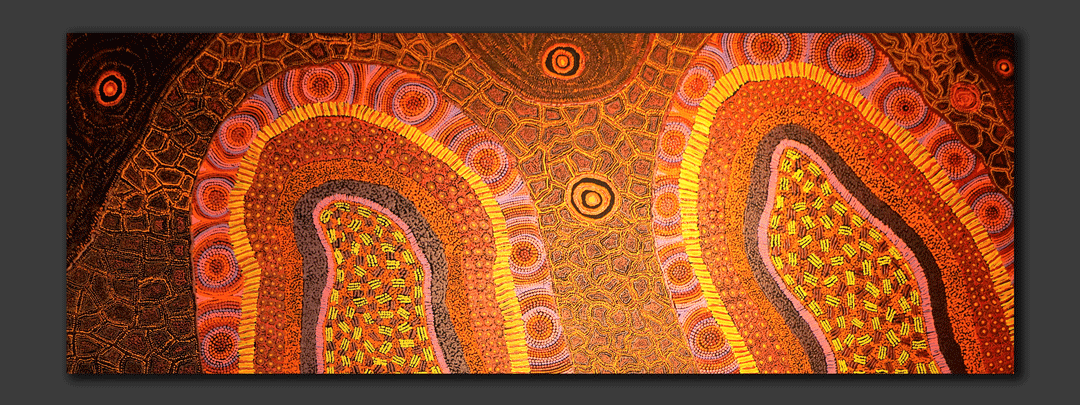
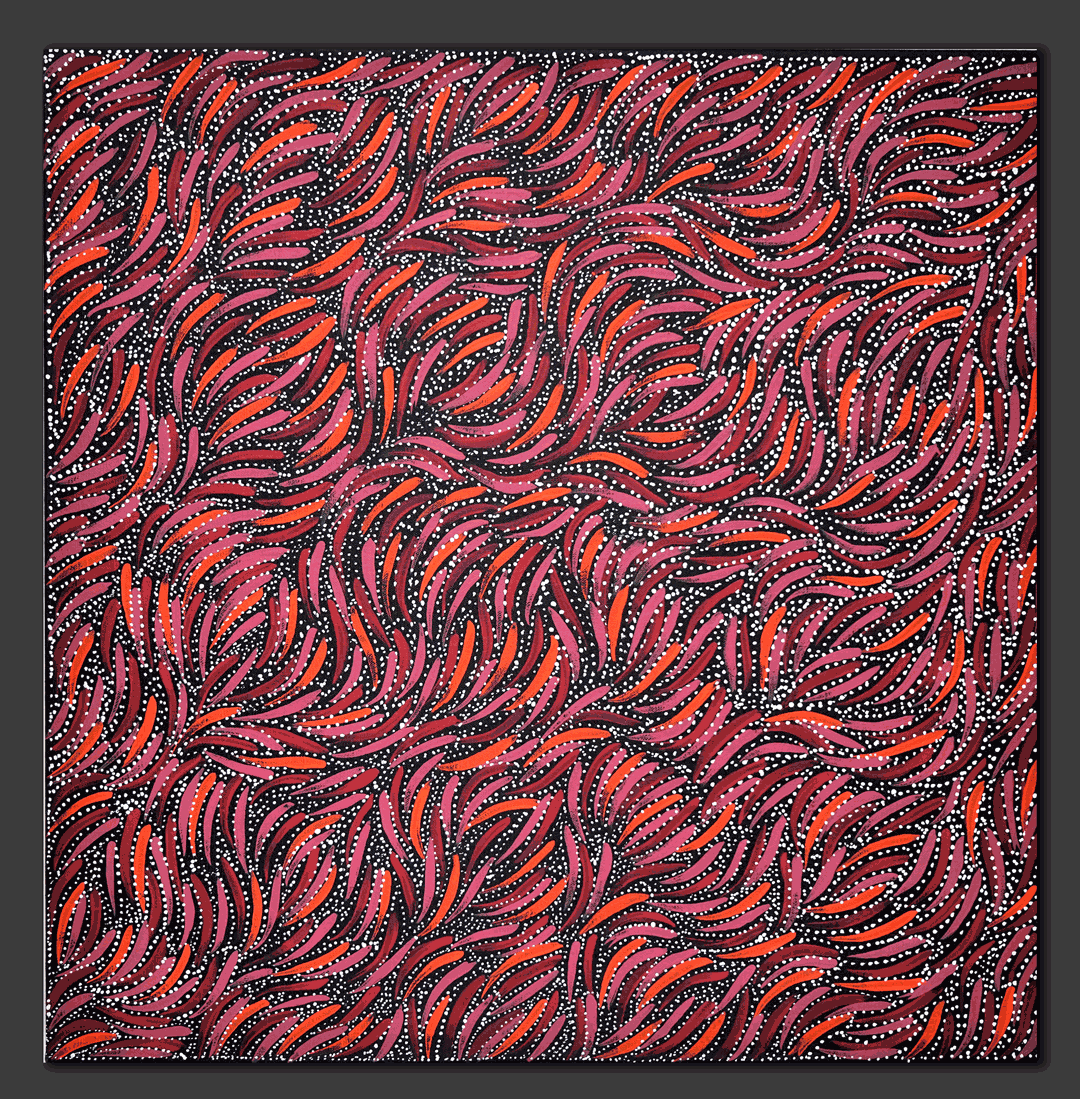
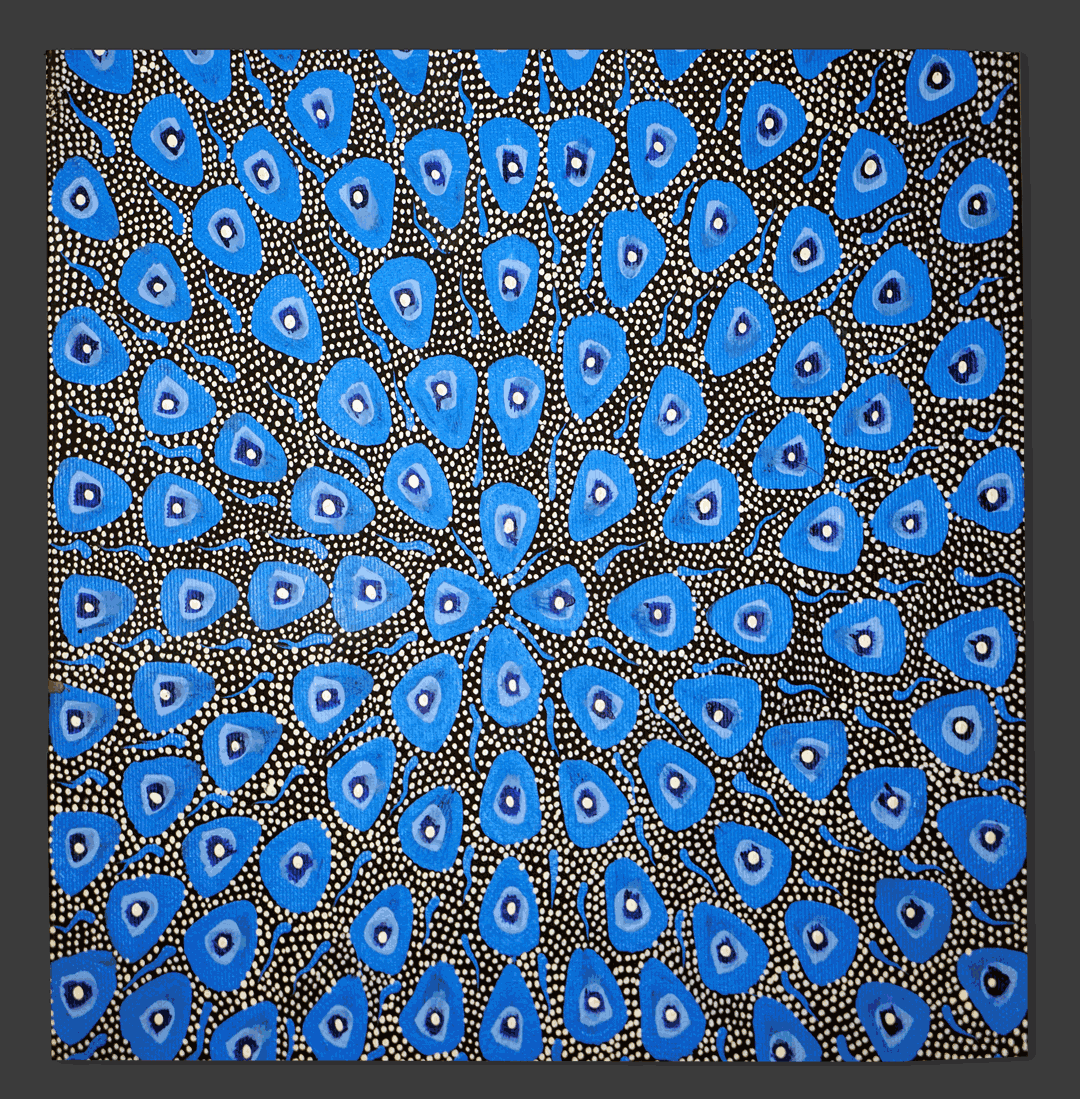
Today e-commerce is redefining how art is marketed. Ian and David introduce me to a leading online platform for buying and selling art – Saatchi Art. This mobile friendly site is extremely interesting – not just as a place to purchase art but as a marketing affiliate for emerging artists. One promotion on the site ‘Be original – Buy original’ is an example of great storytelling. Another is an app that utilises augmented reality technology to enable the potential purchaser to view the ‘virtual artwork’ in their home, this app includes the ability to capture and share.
I ask if purchasing art online is risky. David states ‘we believe in ethical behaviour and would refund the purchase price if an artwork was not to expectations [within 21 days] … we are founding member of the Federal Government’s Indigenous Art Code of Conduct. It is not just about making a sale, what is also important is to ensure that the provenance of the art is respected and that the artists profit form their efforts – we know most of the artists and it is like a ‘birthday surprise’ when they post new works to us.
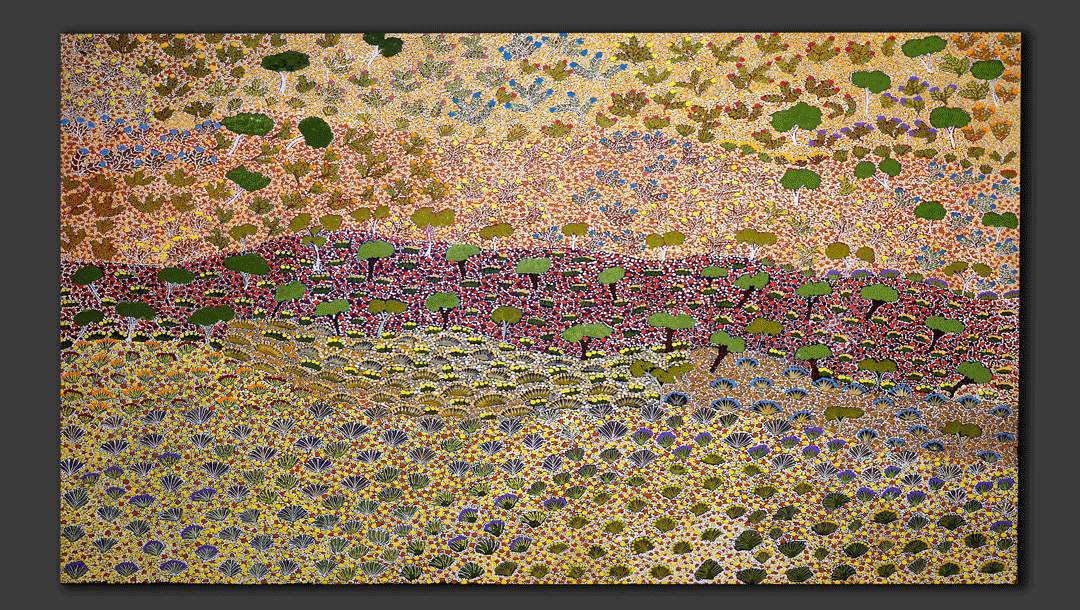
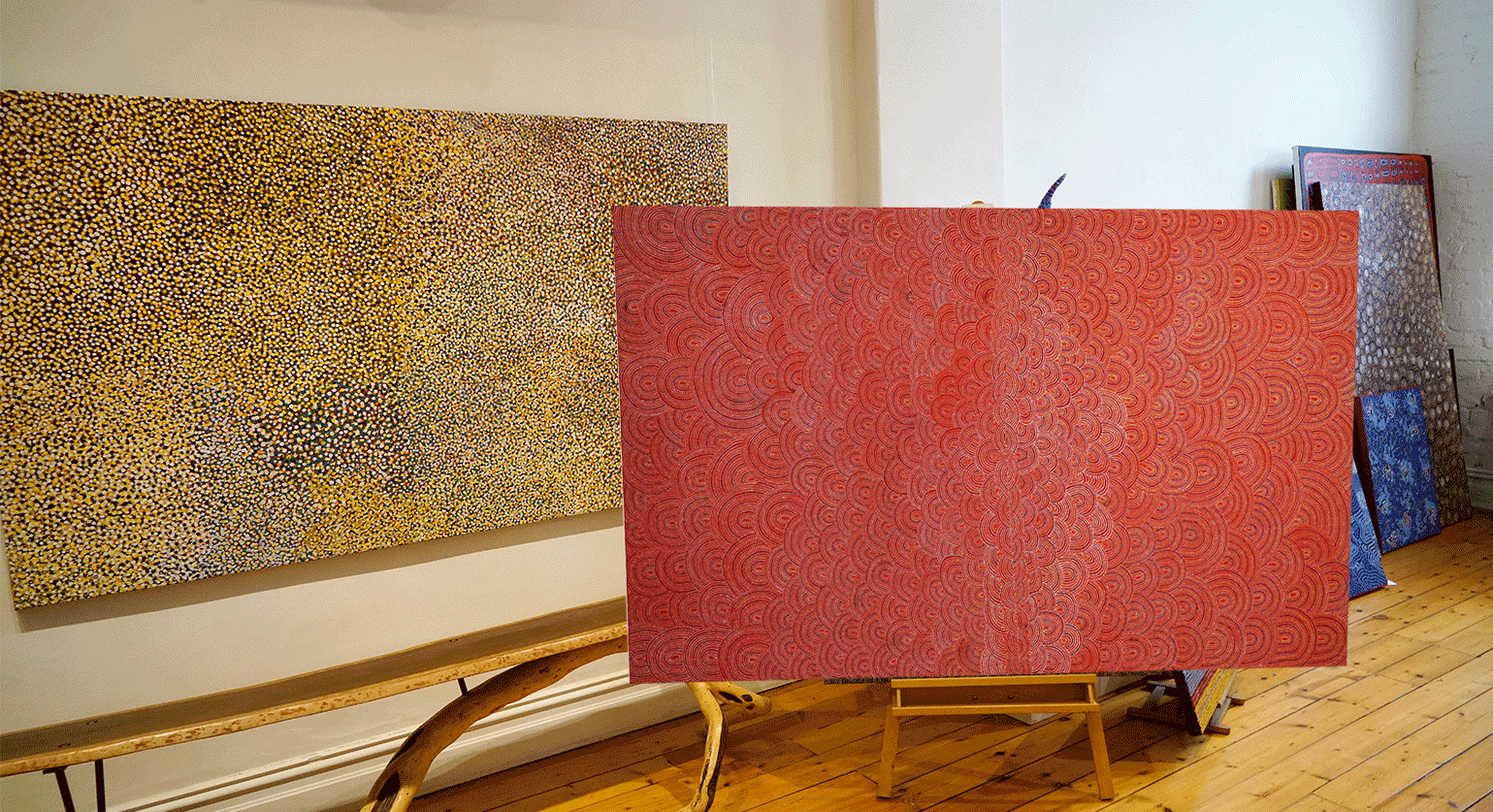
Ian stated that much of today’s interest should be attributed to the hard work of many people, however, former Prime Minister, the late Gough Whitlam deserves special recognition as he promoted the cultural and aesthetic value and woke many people up from a deep sleep. When opening a conference on aboriginal art at the Australian National University, in 1973 Whitlam gave a magnificent speech, here is an excerpt from the speech:

“My aboriginal artworks reminds me of a special time in the Warburton Ranges – The artwork ‘the roads to warburton’ was painted a local young woman – it is not valuable to anyone else but me. The artwork depicts all the colour of the ranges. Before I went there I thought the desert would be one colour – but it is not. Strangely, I lost the painting and then recovered it which was really fortunate – this adds to the story – I now treasure it.”
With their passion evident it is not surprising that David, Ian, and Jody have taken Aboriginal Art to the world and have undertaken many exhibitions overseas. They have a higher purpose – to communicate an appreciation for the culture and believe that there should be an Aboriginal Artwork in ever Australian home. The see the relationship as about sustainability and their goal is to provide remote communities with a stable source of income, work that is respected by the local and wider community, and is in harmony and preserves their culture.
Considering Australian Aboriginal art as a product
When we examine the marketing of Australian Aboriginal artworks as a product, we can clearly see all 6 product components are present. You may recall that the product components are goods, services, ideas, experiences, people and places. In sum: the artwork itself is material [goods], it provides an aesthetic service to the owner, it is embedded with ideas, it provides an experience, it represents the artist [people], and portrays a place.
For many, Australian Aboriginal artworks would be classified as an ideas dominant product [not discounting the importance of the other product components]. To effectively communicate and diffuse the symbolic and aesthetic ‘ideas’ embeded within Australian Aboriginal artwork requires a synergistic, symbiotic, strategic, and sustainable marketing relationship between the artists and the gallery. The artists are cultural producers and the gallery is more than a ‘marketing intermediary’, they are a ‘marketing influencer’. The galleries are influencing consumer tastes and helping to create a consumer culture that values and adopts the ideas embedded within Australian Aboriginal art Successful marketing of this product requires an expanded interpretation of profit, one that is richer than a financial profit of a balance sheet.
You may find the following interesting
Venkatesh, A. & Meamber, L. A. (2006). Arts and aesthetics: Marketing and cultural production. Marketing Theory 6(1), 11–39. The authors discuss artists, in general, as cultural interpreters and producers
Belk, R. & Groves, R. (1999). Marketing and the Multiple Meanings of Australian Aboriginal Art. Journal of Macromarketing 19(1), 20-33. The authors discuss how meanings and interpretations vary with distance from the place of production.


Creating a unique customer experience
Every organisation needs to create a unique product value proposition & this needs to be communicated to the customer and understood by the customer.
East West design is located in South Fremantle a short distance from South Beach. The building is a former wool store; the outside of the building which spans two streets [South Terrace and Marine Parade] has a magnificent trompe l’oeil mural painted by artist Graeme Richards – seeing is believing.
The mural promotes the types of products and the provenance of the product contained within the huge Jarrah beam warehouse. Interestingly, and a little mischievously, the owners’ West Highland Terrier can be found in many of the quirky scenes and this adds a where’s Wally kind of feel. The old warehouse seems perfect as the owners have a re-cycle, re-purpose, re-use philosophy that adds interest to this eclectric collection.
The mural is a magnet for photographers, including wedding photographers as it adds a background style found in photographs of the past. It is as you could imagine the mural attracts many and multiple ‘selfies’ as people set the selfie backgrounds according to the various countries. This is great example on how to amplify social media with a zero marginal cost communication strategy.


The total product
The COMP factors [Customers, Organisation, Market, and Products] influence the business plan, the marketing plan, and the marketing action plans of an organisation. Let’s take a few moments to explore the C&P factors through the total product. The e-book defines the total product as: The totality of what an organisation delivers to the customer – what is promised, therefore, what is expected, what is delivered, and what are the total costs to the customer.
The total East West Design product is made up of product considerations, product layers, and product components – just as any other total product. There are 6 product components, not all total products have all 6 product components. East West Design is a great example of a total product with all 6 and also how the 6 product components are managed.
Goods: To a consumer the goods are, over the life of the product, the core product, and the goods provide a service to consumers – for example a dining table enables the family to sit and have a meal. In the video we can see a variety of goods for the home and garden.
Services: East West Design also provide services. Internal services are the processes that enable the organisation to function. External services are directed towards external customers; for example, with their customers’ needs in mind [target market] they select goods from around the world. Many of these services like shipping, storage, deliver are backstage and hidden [out of sight and out of mind]. Other services are frontstage and visible; for example the services the staff provide to their customers. Regardless of whether the services are hidden or visible the cost of the service is part of the total cost of bringing the product to market and ultimately part of a customer’s evaluation of satisfaction.
Ideas: As you walk through the warehouse ideas on how to furnish a home are everywhere – ideas are communicated within the design of the individual pieces. The philosophy of the organisation [also an idea] is also evident in the selection of the products we can see that East West Design are committed to ideas of re-purposing and re-cycling,
Experiences: There are a number of different experiences in the East West Design total product. For example, the outdoor experience created by the magnificent mural, this adds to the general streetscape but also encourages passers by to stop and take in the mural. Inside the store are also experiences as people take in the collection and the array of eclectic pieces within the store.
People: Of course, nothing happens without people. People are the organisation’s staff that help the customers to interpret their dreams, desires, and demands through the selection of an appropriate product. Perhaps, furnish a room or an outdoor area. As mentioned people also perform hidden and visible services.
Place: There are many place aspects within the total East West Design total product. The warehouse itself – the timer pillars and the large timber beams create an ambiance of a time past [before flat pack furniture]. The provenance of the goods within the warehouse and displayed on the murals. However, it is important to keep in mind that customers buy these products to create their own place within their home, outdoor area or even commercial property.

Two street facades – two different murals
The East West design warehouse has spans two streets – South Terrace [above] and Marine Terrace [below].
The South Terrace facade pays homage to the craftsmen of the various countries in which the products are sourced, interestingly, the Marine Terrace facade recognises the beach across the road and generally the Western Australian beach culture. This mural incorporates as few classic scenes and through a sense of humour highlights some Western Australian icons. It also highlights that many customers try to create the beach side cottage within their home or outdoor areas.
It is no wonder that this is a regular stop for backpackers and tourist buses.

